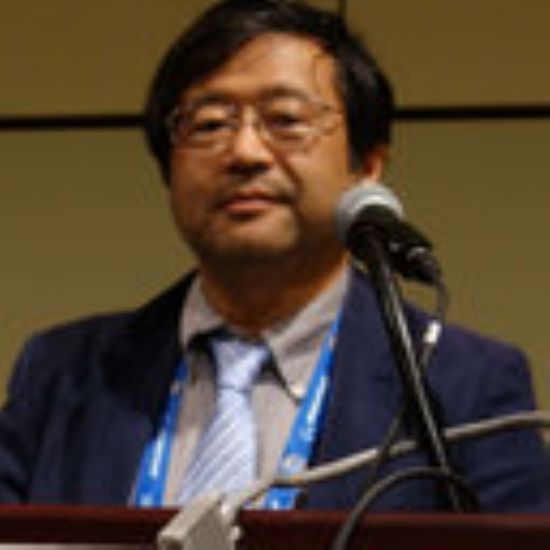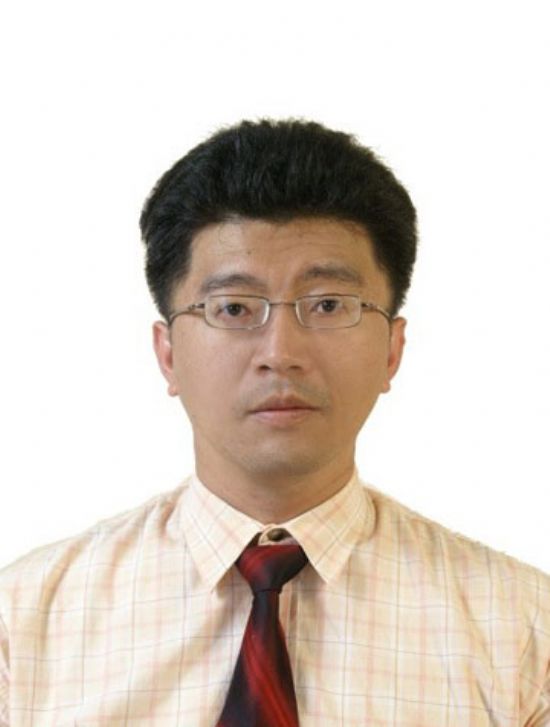Time slot's time in Taipei (GMT+8)
2025/11/22 16:00-21:00 Room 201 DEF
- SYMPOSIUM 10 Autonomic Disorders
Clinical Applications of Electrodiagnostic Assessment in Autonomic Nervous System
- Time
- Topic
- Speaker
- Moderator
- 16:00-16:30
- Standardization of autonomic testing: what is significant and applicable in clinical practice?
- Speaker:
Satoshi Iwase
- Moderator:
Chih-Cheng Huang
- Satoshi Iwase
- MD & PhD
-
Guest Professor, Aichi Medical University
E-mail:s_iwase@nifty.com
- Time
- Topic
- Speaker
- Moderator
- 16:30-17:00
- Autonomic testing in treatment strategy of orthostatic hypotension and intolerance
- Speaker:
Chih-Cheng Huang
- Moderator:
Shoou-Jeng Yeh
- Chih-Cheng Huang
- MD, PhD
-
Attending physician, Dept. of Neurology, Chi-Mei Medical Center, Tainan City, Taiwan
E-mail:hjc2828@gmail.com
Executive Summary:
Dr. Chih-Cheng Huang is an attending neurologist at Chi-Mei Medical Center, Taiwan. He earned his MD from Kaohsiung Medical University in 1996 and completed his neurology residency there. He holds a PhD in biomedical engineering from National Cheng Kung University and completed fellowships in neuromuscular disorders at Kaohsiung Chang Gung Memorial Hospital and in autonomic physiology at the Mayo Clinic, USA. Dr. Huang established one of Taiwan’s most advanced autonomic laboratories, integrating clinical service with research on autonomic function in various diseases. He is a former Secretary General of the Taiwan Society of Clinical Neurophysiology and currently serves on the Autonomic and Neuromuscular Committees of the Taiwan Neurological Society.
Dr. Chih-Cheng Huang is an attending neurologist at Chi-Mei Medical Center, Taiwan. He earned his MD from Kaohsiung Medical University in 1996 and completed his neurology residency there. He holds a PhD in biomedical engineering from National Cheng Kung University and completed fellowships in neuromuscular disorders at Kaohsiung Chang Gung Memorial Hospital and in autonomic physiology at the Mayo Clinic, USA. Dr. Huang established one of Taiwan’s most advanced autonomic laboratories, integrating clinical service with research on autonomic function in various diseases. He is a former Secretary General of the Taiwan Society of Clinical Neurophysiology and currently serves on the Autonomic and Neuromuscular Committees of the Taiwan Neurological Society.
Lecture Abstract:
The autonomic nervous system (ANS) is widely distributed throughout the body and regulates diverse physiological functions. Both the International Federation of Clinical Neurophysiology (IFCN) and the American Academy of Neurology (AAN) emphasize that “a combination of autonomic tests in a screening battery provides a more accurate measure of autonomic function, as a single test alone cannot distinguish the severity or distribution of autonomic failure.” The Mayo Clinic autonomic reflex screen (ARS), developed by P. A. Low, evaluates sudomotor, cardiovagal, and adrenergic functions in a standardized manner. Test results can be quantified using the 10-point Composite Autonomic Severity Score (CASS), which grades the severity of autonomic impairment. This ARS battery has been widely adopted in clinical and research settings.
In this presentation, we will discuss how the Mayo Clinic ARS battery can be applied in the diagnosis of orthostatic hypotension and orthostatic intolerance. Given that quantitative sudomotor axon reflex testing (QSART) and the thermoregulatory sweat test (TST) are not commonly available, our focus will be on the cardiovagal and adrenergic domains. Through demonstration of representative cases, we will illustrate how these test results reveal underlying pathophysiological mechanisms and guide therapeutic decision-making.
The autonomic nervous system (ANS) is widely distributed throughout the body and regulates diverse physiological functions. Both the International Federation of Clinical Neurophysiology (IFCN) and the American Academy of Neurology (AAN) emphasize that “a combination of autonomic tests in a screening battery provides a more accurate measure of autonomic function, as a single test alone cannot distinguish the severity or distribution of autonomic failure.” The Mayo Clinic autonomic reflex screen (ARS), developed by P. A. Low, evaluates sudomotor, cardiovagal, and adrenergic functions in a standardized manner. Test results can be quantified using the 10-point Composite Autonomic Severity Score (CASS), which grades the severity of autonomic impairment. This ARS battery has been widely adopted in clinical and research settings.
In this presentation, we will discuss how the Mayo Clinic ARS battery can be applied in the diagnosis of orthostatic hypotension and orthostatic intolerance. Given that quantitative sudomotor axon reflex testing (QSART) and the thermoregulatory sweat test (TST) are not commonly available, our focus will be on the cardiovagal and adrenergic domains. Through demonstration of representative cases, we will illustrate how these test results reveal underlying pathophysiological mechanisms and guide therapeutic decision-making.
- Time
- Topic
- Speaker
- Moderator
- 17:00-17:30
- Clinical perspective of autonomic dysfunction in a-synucleinopathy -Consideration using MIBG myocardial scintigraphy
- Speaker:
Satoshi Orimo
- Moderator:
Ruey-Meei Robin Wu
- Satoshi Orimo
- MD
-
director, Kamiyoga Setagaya Street Cllinic
E-mail:sorimo0307@gmail.com
Executive Summary:
Dr. Orimo graduated from Faculty of Medicine, Shinshu University and obtained his Ph.D. at Tokyo Medical and Dental University. He trained as to be a clinical neurologist at Tokyo Medical and Dental University Hospital and Kanto Teishin Hospital. Now he is a director of Kamiyoga Setagaya Street Clinic. He has been working at several hospitals as a neurologist and also has been researching on the pathophysiology of Lewy body disease. He received Ueda Memorial Heart Trust award in 1999, Narabayashi award in 2007, Medical Research award of Tokyo Medical Association in 2008, and Alumni Association of Shinshu University award in 2009 for his research works. He worked as a president of the 16th congress of Parkinson’s Disease and Movement Disorders held by Movement Disorders Society Japan (MDSJ) in 2022. Daily he makes an effort on examining patients with both a mind of “Akahige doctor” and the eyes of a scientist.
Dr. Orimo graduated from Faculty of Medicine, Shinshu University and obtained his Ph.D. at Tokyo Medical and Dental University. He trained as to be a clinical neurologist at Tokyo Medical and Dental University Hospital and Kanto Teishin Hospital. Now he is a director of Kamiyoga Setagaya Street Clinic. He has been working at several hospitals as a neurologist and also has been researching on the pathophysiology of Lewy body disease. He received Ueda Memorial Heart Trust award in 1999, Narabayashi award in 2007, Medical Research award of Tokyo Medical Association in 2008, and Alumni Association of Shinshu University award in 2009 for his research works. He worked as a president of the 16th congress of Parkinson’s Disease and Movement Disorders held by Movement Disorders Society Japan (MDSJ) in 2022. Daily he makes an effort on examining patients with both a mind of “Akahige doctor” and the eyes of a scientist.
Lecture Abstract:
The neuropathological hallmark of Lewy body disease (LBD) such as Parkinson’s disease (PD) and dementia with Lewy bodies (DLB) is the presence of neuronal intracytoplasmic inclusions known as Lewy bodies (LBs) in various regions of the nervous system. -Synuclein is a major constituent of LBs in LBD as well as glial cytoplasmic inclusions in multiple system atrophy (MSA). Therefore, LBD and MSA are collectively grouped as -synucleinopathy. Autonomic dysfunction is an important clinical feature seen in -synucleinopathy, while the pathophysiological mechanism of autonomic dysfunction is different between LBD and MSA. 123I-metaiodobenzylguanidine (MIBG) is a physiological analogue of noradrenaline and has mechanisms of uptake and storage similar to those of noradrenaline. Therefore, we can non-invasively assess the pathophysiology and distribution of postganglionic presynaptic cardiac sympathetic nerve endings using MIBG. In Japan, 123I-MIBG myocardial scintigraphy is commonly used to differentiate LBD from other related disorders. Cardiac MIBG uptake is reduced in patients with LBD and is usually normal in patients with MSA, even though the autonomic dysfunction is more severe in MSA than in LBD, indicating that 123I-MIBG myocardial scintigraphy is a useful imaging tool to differentiate LBD from MSA. The cardiovascular autonomic control center of the sympathetic nervous system is a brainstem component such as the cardiovascular autonomic center of the ventrolateral medulla, intermediolateral cell column of the spinal cord, sympathetic ganglia, and postganglionic sympathetic nerves. The responsible lesions for cardiovascular autonomic dysfunction are the brainstem and preganglionic sympathetic nerves in MSA, while the brainstem, preganglionic sympathetic nerves together with the postganglionic sympathetic nerves in LBD. Indeed, postmortem studies have shown that the number of tyrosine hydroxylase-immunoreactive nerve fibers of the heart was decreased in pathologically-confirmed LBD, but was not decreased in MSA, supporting the findings of reduced cardiac MIBG uptake only in LBD.
The neuropathological hallmark of Lewy body disease (LBD) such as Parkinson’s disease (PD) and dementia with Lewy bodies (DLB) is the presence of neuronal intracytoplasmic inclusions known as Lewy bodies (LBs) in various regions of the nervous system. -Synuclein is a major constituent of LBs in LBD as well as glial cytoplasmic inclusions in multiple system atrophy (MSA). Therefore, LBD and MSA are collectively grouped as -synucleinopathy. Autonomic dysfunction is an important clinical feature seen in -synucleinopathy, while the pathophysiological mechanism of autonomic dysfunction is different between LBD and MSA. 123I-metaiodobenzylguanidine (MIBG) is a physiological analogue of noradrenaline and has mechanisms of uptake and storage similar to those of noradrenaline. Therefore, we can non-invasively assess the pathophysiology and distribution of postganglionic presynaptic cardiac sympathetic nerve endings using MIBG. In Japan, 123I-MIBG myocardial scintigraphy is commonly used to differentiate LBD from other related disorders. Cardiac MIBG uptake is reduced in patients with LBD and is usually normal in patients with MSA, even though the autonomic dysfunction is more severe in MSA than in LBD, indicating that 123I-MIBG myocardial scintigraphy is a useful imaging tool to differentiate LBD from MSA. The cardiovascular autonomic control center of the sympathetic nervous system is a brainstem component such as the cardiovascular autonomic center of the ventrolateral medulla, intermediolateral cell column of the spinal cord, sympathetic ganglia, and postganglionic sympathetic nerves. The responsible lesions for cardiovascular autonomic dysfunction are the brainstem and preganglionic sympathetic nerves in MSA, while the brainstem, preganglionic sympathetic nerves together with the postganglionic sympathetic nerves in LBD. Indeed, postmortem studies have shown that the number of tyrosine hydroxylase-immunoreactive nerve fibers of the heart was decreased in pathologically-confirmed LBD, but was not decreased in MSA, supporting the findings of reduced cardiac MIBG uptake only in LBD.







